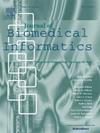利用自监督机器学习的新型数据驱动方法进行医疗保健领域的 Personas 验证。
IF 4
2区 医学
Q2 COMPUTER SCIENCE, INTERDISCIPLINARY APPLICATIONS
引用次数: 0
摘要
目标:角色验证是一项具有挑战性的任务,通常依赖于昂贵的外部验证方法。本研究的目的是开发一种基于创建过程中已有数据的人物角色验证新方法。方法:提出一种基于自监督机器学习(SSML)的新方法。执行训练-测试分割(80 %-20 %),训练集用于人物角色开发。将得到的标签作为输入,进行5次交叉验证网格搜索,得到5个最优的不同模型。使用训练好的聚类模型确定测试集的“弱”基础真值,并与多数投票的最优模型预测结果进行比较。采用加权正确率、精密度、召回率和F1评分进行绩效评价。结果:提出的方法在由问卷组成的两个非常不同的医疗保健数据集上进行了评估。前者有1070名受试者,产生了三个不平衡的人物角色(P0 n = 100;P1 n = 292;P2 n = 464)。后者包括176名受试者,他们有三个稍微不平衡的角色。(P0 n = 58;P1 n = 32;P2 n = 50)。结果表明,SSML方法能够正确区分具有较高权重准确度(88.27 %和94.12 %)、精密度(87.11 %和92.83 %)、召回率(86.92 %和91.67 %)和F1分数(86.92 %和91.76 %)的聚类。结论:所提出的方法在训练数据之外显示出较高的泛化能力,验证了Personas对目标人群特征进行分层的能力。此外,与当前文献中的其他方法相比,该方法显著降低了验证人物角色的成本。本文章由计算机程序翻译,如有差异,请以英文原文为准。

A novel data-driven approach for Personas validation in healthcare using self-supervised machine learning
Objective
Persona validation is a challenging task, often relying on costly external validation methods. The aim of this study was the development of a novel method for Personas validation based on data already available during their creation.
Methods
A novel approach based on self-supervised machine learning (SSML) was proposed. A training-test split was performed (80 % - 20 %), with the training set used for Personas development. The obtained labels were used as input for a 5-fold cross-validation grid search, resulting in 5 optimal different models. The “weak” ground truth for the test set was determined using the trained clustering model, and was compared with the prediction obtained by the majority voting of the optimal models. Performance evaluation was conducted by means of weighted accuracy, precision, recall and F1 score.
Results
The proposed method was evaluated on two very different healthcare datasets composed by questionnaires. The former was presented 1070 subjects, resulting in three unbalanced Personas (P0 n = 100; P1 n = 292; P2 n = 464). The latter included 176 subjects with three slightly unbalanced Personas. (P0 n = 58; P1 n = 32; P2 n = 50). The SSML approach resulted capable of correctly differentiating the clusters with high values of weighted accuracy (88.27 % and 94.12 %), precision (87.11 % and 92.83 %), recall (86.92 % and 91.67 %), and F1 score (86.92 % and 91.76 %).
Conclusions
The proposed method showed high capabilities in generalization beyond the training data, validating the Personas’ capability of stratifying the characteristics of target populations. Additionally, this method significantly reduced the costs to validate Personas when compared to other methods in current literature.
求助全文
通过发布文献求助,成功后即可免费获取论文全文。
去求助
来源期刊

Journal of Biomedical Informatics
医学-计算机:跨学科应用
CiteScore
8.90
自引率
6.70%
发文量
243
审稿时长
32 days
期刊介绍:
The Journal of Biomedical Informatics reflects a commitment to high-quality original research papers, reviews, and commentaries in the area of biomedical informatics methodology. Although we publish articles motivated by applications in the biomedical sciences (for example, clinical medicine, health care, population health, and translational bioinformatics), the journal emphasizes reports of new methodologies and techniques that have general applicability and that form the basis for the evolving science of biomedical informatics. Articles on medical devices; evaluations of implemented systems (including clinical trials of information technologies); or papers that provide insight into a biological process, a specific disease, or treatment options would generally be more suitable for publication in other venues. Papers on applications of signal processing and image analysis are often more suitable for biomedical engineering journals or other informatics journals, although we do publish papers that emphasize the information management and knowledge representation/modeling issues that arise in the storage and use of biological signals and images. System descriptions are welcome if they illustrate and substantiate the underlying methodology that is the principal focus of the report and an effort is made to address the generalizability and/or range of application of that methodology. Note also that, given the international nature of JBI, papers that deal with specific languages other than English, or with country-specific health systems or approaches, are acceptable for JBI only if they offer generalizable lessons that are relevant to the broad JBI readership, regardless of their country, language, culture, or health system.
 求助内容:
求助内容: 应助结果提醒方式:
应助结果提醒方式:


